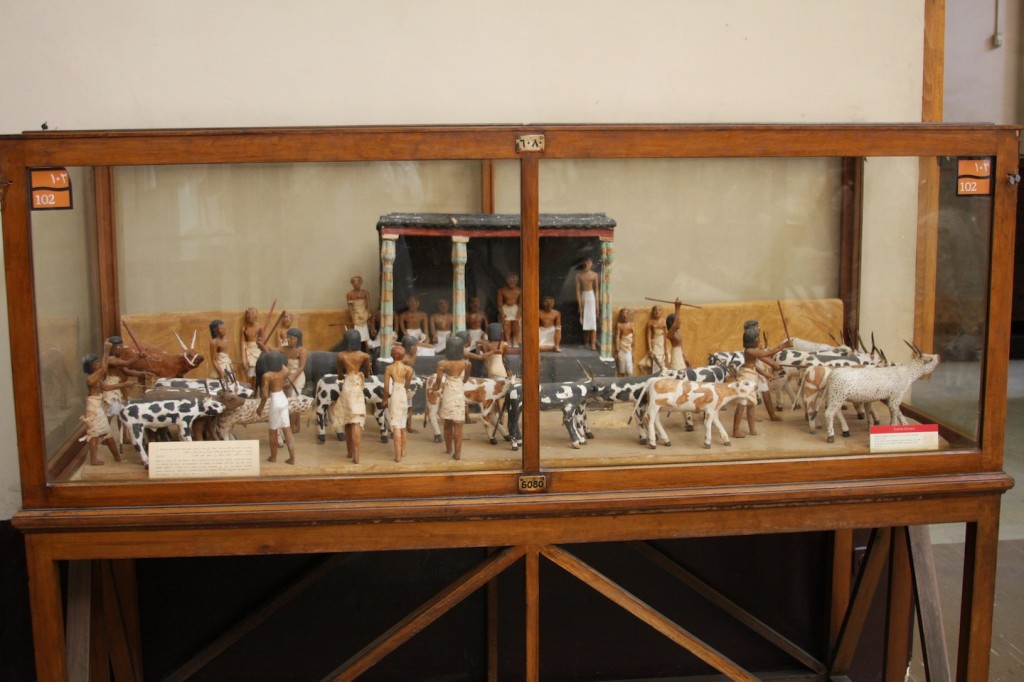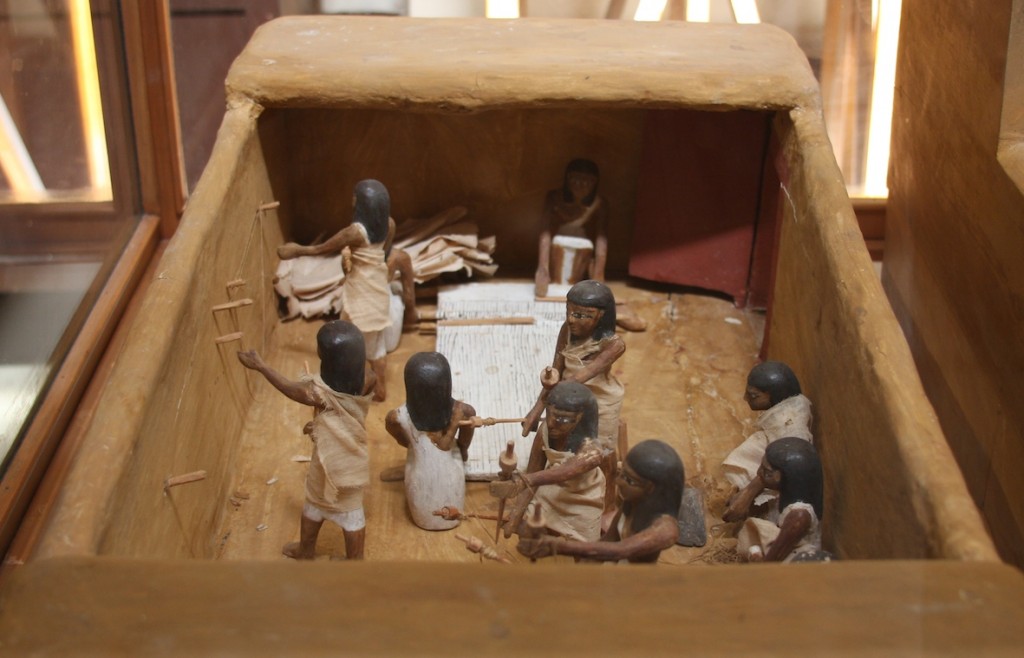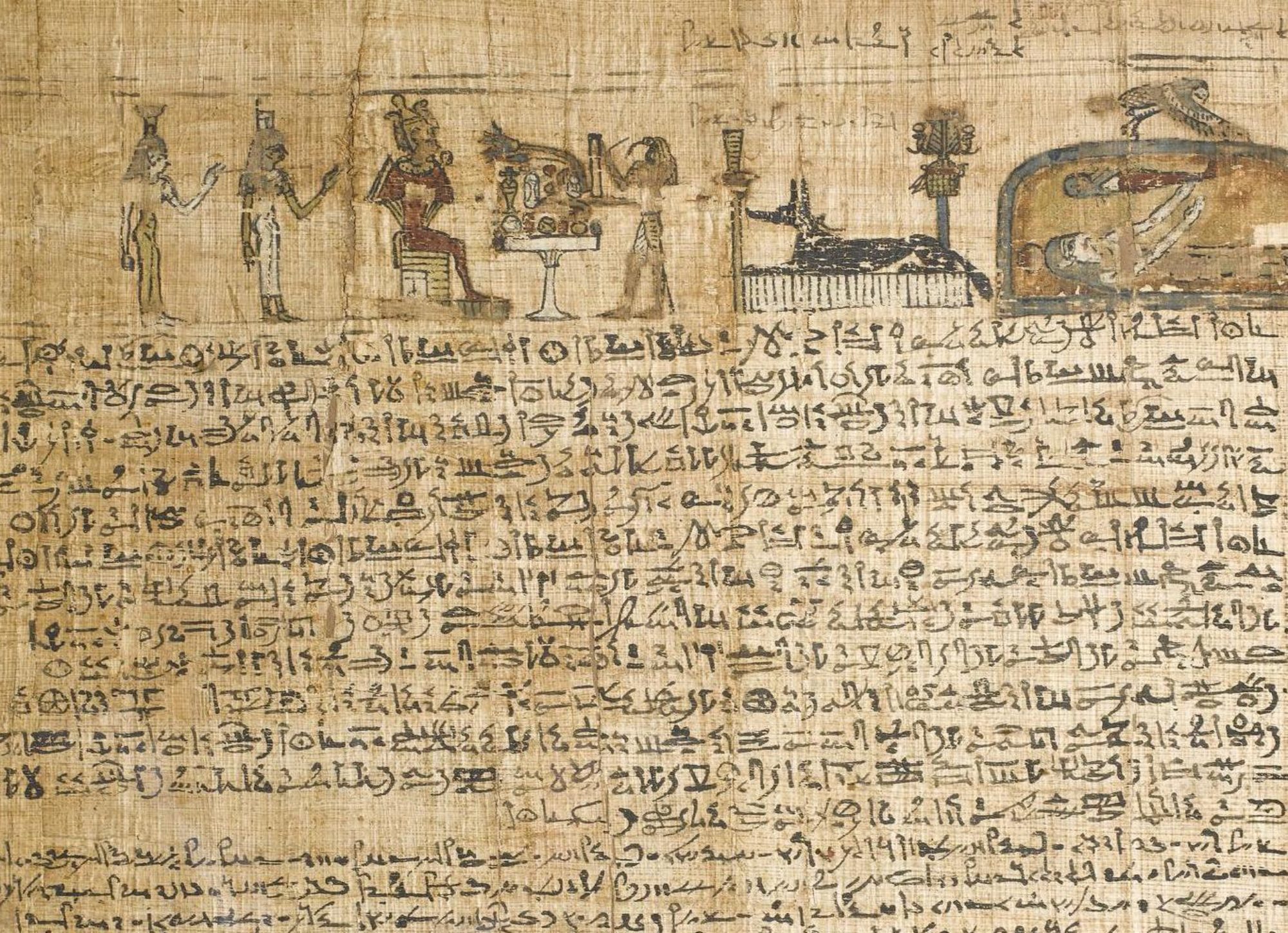
the Dialogue of Ipuwer and the Lord of All
from the poem The Prophecy of Neferti,
With all of the ongoing change happening in Egypt right now, there is the danger that what has existed there for millennia could be lost in just a moment. The people have been fearlessly standing up and making their voices heard, but the fire and chaos in Cairo is threatening the Museum of Egyptian Antiquities. Reports coming in via Twitter told of the protestors forming an incredible human chain around the museum to protect it until the army could come to take over. Now tweets are reporting Al Jazeera showing scenes of looting within the museum. The sad news has come of Dr. Zahi Hawass confirming damage and the destruction of at least two mummies. With the continuing upheaval, I am fearful for both the people and the vast repository of beauty, wisdom, history, and monumental human achievement concentrated in that one building. Many know the museum as the home of Tutankhamun’s treasures, the single greatest collection of burial goods from ancient Egypt, including not only the gold mask, but everything from chariots to underwear. But the museum holds so much more.
To any student of Egyptology who visits for the first time, the experience is mind boggling. Object after object is a masterpiece, telling fabulous stories of the birth of civilization, genius architects, powerful kings, master artists, great generals, eloquent writers, and the ordinary people who lived and died on the banks of the Nile. From the serene beauty of the statues of King Menkaure or the dazzling treasures of Tutankhamun’s grandparents, to the delicate perfection of the painting of the Meidum geese or the exquisite Middle Kingdom jewellery, copied by Art Deco jewellers.
Papyrus Boulaq 18 records the day-to-day working of an ancient Egyptian palace, including the wages that were paid, while the actual beautifully decorated floors from the palace at Amarna, on which Akhenaten and Nefertiti would have walked, are also preserved in the museum.
The magnificent models from the tomb of Meketre come from another time of transition in Egyptian history. Meketre served the king who managed to reunite the country after its first long period of decentralization. The enormous wooden model depicting cattle stocktaking is absolutely unique in ancient Egypt. The amount of detail in this, and other models, give us insight into daily life, ancient technology, and social relations. Even the bodies of the pharaohs themselves lie in state in the museum, like Ramesses III, who battled invasions by the Sea Peoples and whose wife, son, and officials conspired to assassinate him.
What I am possibly most afraid for though is all the unknown, undocumented treasures that lie buried in the basement of the museum. Most museums only have a few percent of their entire collections on display, but in the Egyptian Museum the number of artefacts in storage is so vast that no one entirely knows what’s down there. There are often stories of amazing artefacts being ‘rediscovered’. The first 30 seconds of the video below gives just a glimpse of the labyrinth of objects that lies below the museum. If anything were to happen to these pieces, not only would they be lost to future generations, but the potential knowledge they offer would never come to light. Their destruction would be complete, as if they had never existed.
For now, my thoughts are with the people of Egypt, both the modern and the ancient, but I am consoled by the thought that if Ramesses the Great, who may have been up to 90 years old when he died, has managed to survive for over 3000 years with even his hair dye still intact, then perhaps it will take quite a lot more before this particular old man goes anywhere…
I shall show you the land in catastrophe,what should not happen, happening:arms of war will be taken up,and the land will live by uproar….To the heart, spoken words seem like fire;what comes from the mouth cannot be endured.Shrunk is the land–many its controllers.It is bare–its taxes are great.Little is the grain–large is the measure,and it is poured out in rising amounts.The Sungod separates Himself from mankind.He will rise when it is time,but no one knows when midday occurs, no one can distinguish His shadow
~from the poem ‘The Prophecy of Neferti’, written over 3500 years ago

With all of the ongoing change happening in Egypt right now, there is the danger that what has existed there for millennia could be lost in just a moment. While the people have been fearlessly standing up and making their voices heard, the fire and chaos in Cairo has been threatening the Museum of Egyptian Antiquities. Reports coming in via Twitter told of the protestors forming an incredible human chain around the museum to protect it until the army could come to take over. Now tragic reports have come in from Dr. Zahi Hawass himself of some damage by looters and the destruction of at least two mummies. With the continuing upheaval, I am fearful for both the people of Egypt and the vast repository of beauty, wisdom, history, and monumental human achievement concentrated in that one building. Many know the museum as the home of Tutankhamun’s treasures, the single greatest collection of burial goods from ancient Egypt, including not only the gold mask, but everything from chariots to underwear. But the museum holds so much more.
To any student of Egyptology who visits for the first time, the experience is mind boggling. Object after object is a masterpiece, telling fabulous stories of the birth of civilization, genius architects, powerful kings, master artists, great generals, eloquent writers, and the ordinary people who lived and died on the banks of the Nile. From the serene beauty of the statues of King Menkaure or the dazzling treasures of Tutankhamun’s grandparents, to the delicate perfection of the painting of the Meidum geese or the exquisite Middle Kingdom jewellery, copied by Art Deco jewellers.


Papyrus Boulaq 18 records the day-to-day working of an ancient Egyptian palace, including the wages that were paid, while the actual beautifully decorated floors from the palace at Amarna, on which Akhenaten and Nefertiti would have walked, are also preserved in the museum.
The magnificent models from the tomb of Meketre come from another time of transition in Egyptian history. Meketre served the king who managed to reunite the country after its first long period of decentralization. The enormous wooden model depicting cattle stocktaking is absolutely unique in ancient Egypt. The amount of detail in this, and other models, give us insight into daily life, ancient technology, and social relations.


Even the bodies of the pharaohs themselves lie in state in the museum, like Ramesses III, who battled invasions by the Sea Peoples and whose wife, son, and officials conspired to assassinate him.
What I am possibly most afraid for though is all the unknown, undocumented treasures that lie buried in the basement of the museum. Most museums only have a few percent of their entire collections on display, but in the Egyptian Museum the number of artefacts in storage is so vast that no one entirely knows what’s down there. There are often stories of amazing artefacts being ‘rediscovered’. The first 30 seconds of the video below gives just a glimpse of the labyrinth of objects that lies below the museum. If anything were to happen to these pieces, not only would they be lost to future generations, but the potential knowledge they offer would never come to light. Their destruction would be complete, as if they had never existed.
For now, my thoughts are with the people of Egypt, both the modern and the ancient. I am watching with baited breath for further news of the fate of the objects kept in the museum, a repository of the country’s history and a monument to human achievement. My hopes are buoyed only by the thought that if Ramesses the Great, who may have been up to 90 years old when he died, has managed to survive for over 3000 years with even his hair dye still intact, then hopefully this particular henna’d old man is not going anywhere…

It’s terrible to hear of what’s happening to Egypt and to think that the people are actually attacking the irreplaceable history of their land. It’s saddening. I don’t see what Egyptian antiquities or destroying such things has to do with current politics.
This is also why I hold the somewhat controversial view of not agreeing with the new campaign to bring back the treasures of Egypt that are displayed in other countries (such as the Rosetta Stone or Nefertiti’s statue) and believing that museums worldwide should share some antiquities for all to enjoy. There are many reasons why I stand by this idea but the current news has stressed an important reason-not to keep all your eggs in one basket, ie not keeping all your antiquities in one museum or even one country (if Luxor and Aswan etc are also threatened by the riots). I couldn’t imagine if those were lost. I’m having a hard time thinking about the idea of Tut’s treasures or the royal mummies being damaged…
I must agree. Those tresures belong to future generations of the world. I truely understand wanting freedom. I don’t understand vandlism.
What a sunning post you have made. It is truly moving. You have given me a place to direct those who do not share or understand my belief. Thank you.
You put me in mind of a quote that has guided my art and study all these years. It is from a different time and culture than those of the ancient Egyptians, yet it fits.
“Marvel not at the gold and the expense but at the craftsmanship of the work./Bright is the noble work; but, being nobly bright, the work/Should brighten the minds so that they may travel, through the true lights;/To the True Light . . . /The dull mind rises to truth, through that which is material/And in seeing this light, is resurrected from its former submersion.†~Abbot Suger
Végtelenül bÃzom benne, hogy hamarossan helyre áll a rend! És pozÃtiv Ãrányba fordulnak a dolgok!
Echo 4Art. Stunning photographs. Thank you for this log